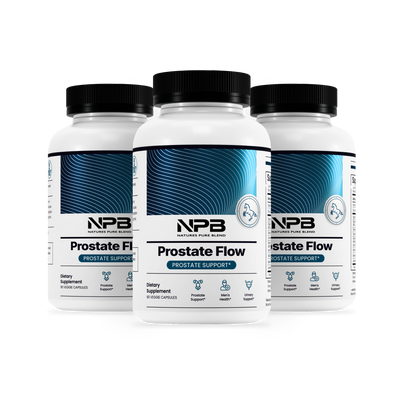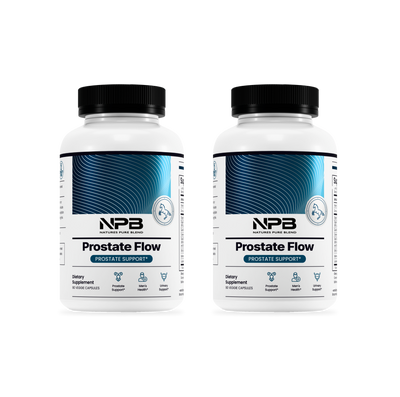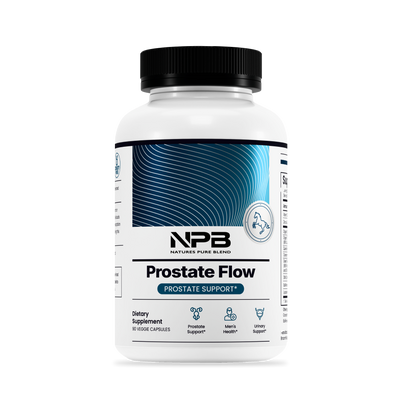The prostate isn’t static—it continues to remodel across adulthood. For many men, the first hints of change are subtle and easy to shrug off: a little more night-time bathroom traffic, a stream that takes a moment to start, or a vague pressure after sitting. Paying attention to these shifts early helps you understand what’s normal for you, track patterns, and decide when to check in with a clinician.
Below are four common, day-to-day changes men report as the prostate ages—what they feel like, why they happen in plain English, and simple ways to track them.
1. More Nighttime Bathroom Trips (Nocturia)
What you might notice: Waking once or more to urinate; sleep feels lighter or less restorative. 1
Why it happens: As prostate tissue enlarges, it can narrow the channel (urethra) the bladder uses to empty. The bladder then becomes more sensitive and signals the urge sooner—especially at night.
What to track:
-
How many wake-ups per night over a week
-
Evening fluid timing and types (caffeine, alcohol, fizzy drinks)
What may help (supportive habits):
-
Front-load fluids earlier in the day; lighter intake 2–3 hours before bed
-
Limit late caffeine/alcohol; prioritize a wind-down routine for better sleep quality
2. Slower Stream & Hesitancy
What you might notice: A delay before urine starts, weaker flow, or needing to push to keep it going. 2
Why it happens: The prostate sits around the urethra like a donut. With age-related tissue growth, the “hole” narrows, so pressure from the bladder must be higher to move urine.
What to track:
-
Time from feeling the urge to actually starting
-
Total time to empty, and whether the stream breaks off
What may help (supportive habits):
-
Take your time—rushing tightens pelvic muscles and can worsen hesitancy
-
Try “double voiding”: wait 20–30 seconds after finishing, then try again gently
-
Pelvic floor training (relax on inhale, gently engage on exhale) to improve coordination
3. “Not Empty” Feeling & Post-Void Dribble
What you might notice: A sense of residual urine after finishing, or a small leak a few minutes later. 3
Why it happens: Incomplete relaxation of the pelvic floor or a narrowed outflow can leave a small amount of urine behind, which can seep out with movement.
What to track:
-
How often dribble occurs and after which activities (standing, walking, lifting)
-
Any patterns with fluid types or timing
What may help (supportive habits):
-
Gentle perineal pressure or a few pelvic tilts after voiding to clear residual drops
-
Scheduled bathroom breaks (e.g., every 3–4 hours) to reduce overfilling
-
Pelvic floor exercises focused on full relaxation before a brief, light contraction
4. Pelvic Pressure or Achiness (After Sitting or Activity)
What you might notice: Dull pressure between the scrotum and anus (perineum), discomfort after long drives, cycling, or after ejaculation. 4
Why it happens: Local tissues can become sensitive when the area is compressed or when the bladder and pelvic floor are working harder to overcome outflow resistance.
What to track:
-
Activities that set it off (sitting time, bike rides, heavy lifting)
-
Relief strategies that help (stretching, heat, walking)
What may help (supportive habits):
-
Break up long sitting every 30–45 minutes; consider a softer seat or bike saddle cut-out
-
Gentle hip and pelvic floor mobility work; warm shower or heating pad as needed
-
Stay regular with bowel movements—straining increases pelvic pressure
Simple At-Home Tracking (2 Weeks)
-
Fluid & voiding log: note time, amount (estimate is fine), and urgency (0–3 scale)
-
Night log: bed/wake times, number of wake-ups, and what helped
-
Triggers: caffeine, alcohol, spicy foods, cycling, long car rides
-
Bring this log to your clinician; it’s far more informative than a single visit measurement.
When to Check In
-
Symptoms are bothersome or getting in the way of sleep, work, or activity
-
You’re unsure if what you’re feeling is typical for your age
-
You notice new red flags: fever with pelvic pain, burning with urination, visible blood in urine, sudden inability to urinate, or severe pain (seek care promptly)
Bottom Line
Age-related prostate changes are common, and they often announce themselves through everyday patterns—nighttime trips, a slower stream, a lingering “not empty” feeling, or pelvic pressure after sitting or activity. None of these symptoms alone define your health, but together they sketch a clear picture you can act on. Start by observing and logging for two weeks, adjust simple habits (fluid timing, pelvic floor coordination, movement breaks), and share your notes with a clinician who can evaluate next steps in the context of your history and goals.
Educational use only. Not medical advice. If you experience severe pain, fever, inability to urinate, or blood in the urine, seek medical care promptly.















